Mother Nature has a tendency to let her kids fight it out, and only the strongest get to sire progeny. Many of them decide to go the tried and tested way of claws, teeth, and hearty roars to dissuade others from seeing them as a good meal. Some of the smaller ones, though, don’t have any of those, so, combined with father time’s patience, developed defense mechanisms that don’t just discourage you from eating them but make you go, “Dude what the hell?”
1. The hairy frog breaks its own bones when threatened and uses them as spines to protect itself.
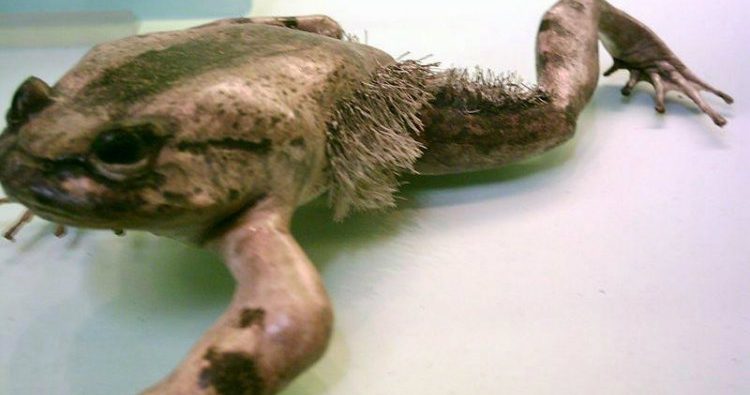
Since claws are not an option, the hairy frog decided that there had to be a better way to stay alive. Now, when it’s threatened, it breaks its bones so hard that they protrude from the skin. Like some low-level wolverine, the animal then uses the claw-like projections to defend itself. For reference, this is called a compound fracture, and, when it happens to a person, all alarm bells go off. You are risking infection, not just a broken limb. The hairy frog isn’t the only animal that does this. The Iberian ribbed newt is also known for breaking its ribs. The bones then protrude as barbs with poison, and it dares anyone to come and give it a hug.
2. The Texas horned Lizard shoots blood from its eyes.
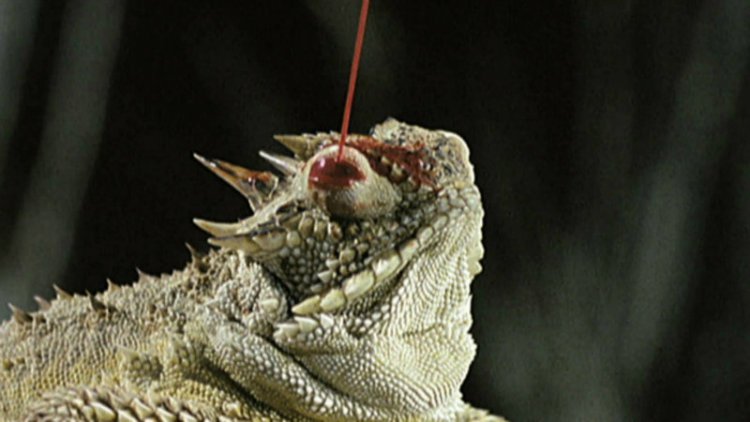
As if not content to let the hairy frog be the only animal that starts losing its body parts when things get tough, the horned lizard from Texas has glands in its eyes which it squeezes and results in it releasing blood from its eyes as a spray. The Texas horned lizard can then spray the liquid on any approaching predator reaching as far as five feet. The attack isn’t without consequence. The horned lizard can lose up to a third of its blood performing this attack. Not only is the attack meant to be a surprise, but the blood also stinks and wards of most of its canine and feline predators. It’s not the only one that can shed blood at will though. The barred grass snake has been known to do this to give a more convincing performance when it is playing dead, but it does not shoot it out of its eye. It only oozes out.
3. Malaysian ants will swarm a predator and explode resulting in their death but ensuring the survival of the colony.
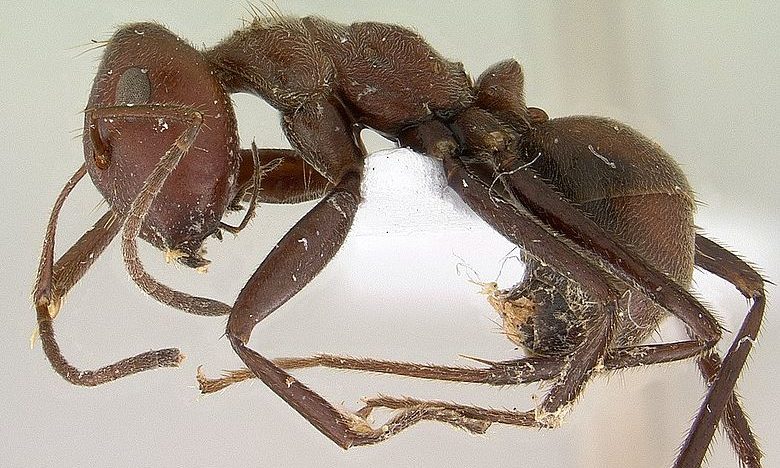
If they sense a predator, Malaysian ants will defend their colony at all costs, including death. They will swarm the animal, getting as close to it as they can, and then explode. They have poison sacs inside their body that will explode and spray the enemy with poison that is corrosive. Some die. but the colony survives. They aren’t the only ones that are willing to die for the greater good. In Guyana, there is a species of termite that does the same thing only taking a smarter approach. The neocapritermes taracua is a species of termites that grows an explosive sack as it ages. If attacked, the elderly are the first to be sent out on the suicide missions ensuring that the younger ones have a better chance of survival.
4. Lemurs will attack a millipede causing the millipede to emit a poison in defense. The lemur will then apply the poison on itself.
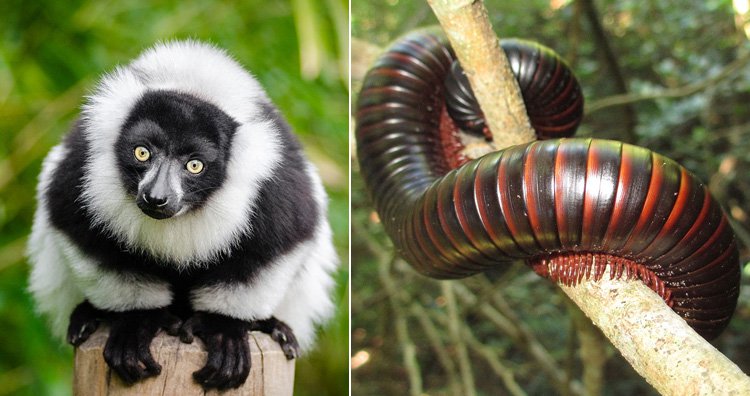
Millipedes are some of the most poisonous animals on the planet. Their defense mechanism includes spraying cyanide on themselves killing anything that’s crazy enough to eat them. Enter the black lemur. The black lemur doesn’t produce any natural poison, so it goes to the millipede for some. When it spots a millipede, the black lemur attacks the creature just enough for it to start releasing its poison. The lemur then applies the foul smelling substance on itself. The poison is used to protect it against insects. Another side effect of the poison is that it causes the Lemur to get intoxicated so it wanders around with its mouth open and drooling before enjoying a bug-free life. It releases the millipede since it had no intention of eating a creature that can produce such potent poison.
5. The Octopoteuthis Deletron can severe all of its tentacles to create a diversion for its escape.
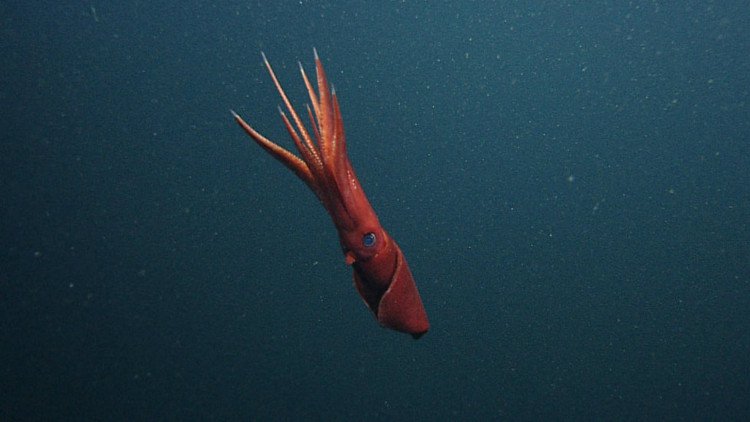
Squids and octopus already have a reputation as some of the weirdest animals out there. They have some critical thinking capacity and four more limbs than us. Were it not for a few crucial IQ points, they would definitely be contenders for rulers of the seas.
When they can’t outsmart predators, squids opt to outrun them in some innovative ways.
For starters, like most squids, the Octopoteuthis deletron is able to squirt ink as a defense. If that isn’t good enough, it digs even deeper to save its own life. Its arms can glow in the dark for it to confuse its enemies and make them think that it’s not edible. If that doesn’t work, it can detach its limbs to escape. The deletronone-ups (seven-ups?) the spider and lizard which are known for detaching limbs by being able to detach all of its eight arms to flee. The arms will flail about and glow leaving the enemy confused as the squid escapes to regrow them later. It might have a challenge capturing food for a few days, but it’s better than itself being captured as food.
6. The hagfish will emit a slime that is so potent it doesn’t even pause when a shark attacks It.
The hagfish is an exception in evolution. It developed a backbone, then noticed it was unnecessary and so lost it. It now scours the ocean floor with other creatures that are some of the first examples of life. More complex life has tried to eat the hagfish, but it responds by emitting a slime that when combined with water is extremely sticky and can even choke animals by sticking to their throats and gills. The goo is so effective that the hagfish doesn’t even have to worry about a shark’s jaws clamping down on it. The shark risks having its mouth pasted shut, and the hagfish will go on with its life as if nothing happened.
7. The pygmy sperm whale poops in the water to create a distraction for its escape from prey.

If you think life on land is harsh for animals, then you should try the sea. A six-meter long whale is labeled a “pygmy” and is prey. Because of its “small” stature, the pygmy whale has to constantly look over its shoulder as it is often preyed upon by sharks and killer whales. Being the butt of whale jokes, you’d think the pygmy whale would find some respectable way to fend off predators. Something like hunting in packs that other whales could tip their hats to.
Instead, when threatened, the pygmy whale will secrete some poo from its anus into the water. The whale then stirs up the water to create a giant cloud of filth and escapes. The poop works the same way that the octopus uses its ink.
8. The dormouse sheds its tail skin to escape from trouble.
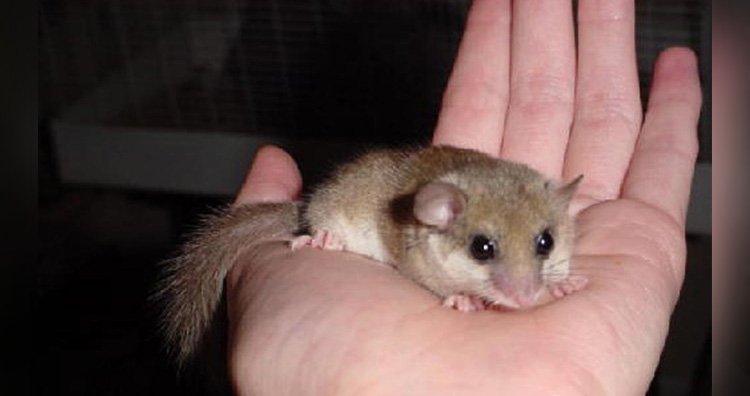
Dormice are a type of rodent found exclusively in Europe. Given their small size, anyone would think them cute and easy prey, but the dormouse has found a way to make a quick escape. Some animals can shed their tails and that’s quite impressive, but what about the skin? The dormouse can do this like some Hanna-Barbera cartoon character that’s seen a ghost. The dormouse has incredibly loose skin at its tail. If a predator grabs the dormouse’s tail, the skin comes off allowing it to make a run for safety. Unfortunately, it can only do this once in its entire life. After the skin is gone the bone also falls off naturally or is gnawed off by vermin. Some dogs will never catch their tail, but this is one animal that can even clean where the tail once was.
9. Young Eurasian roller birds will vomit on themselves to become too disgusting to be eaten.
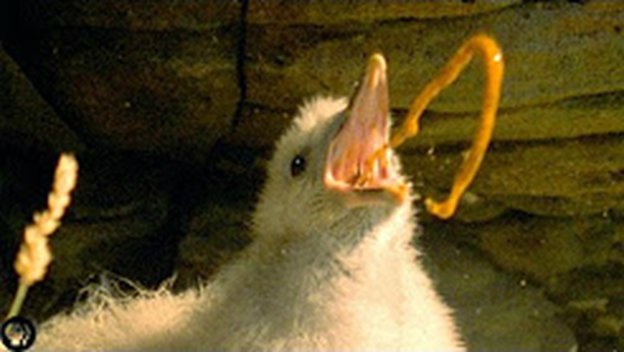
The rollers are Old World birds, but they have been known to travel from Europe to the southern parts of Africa, with some being spotted in Zimbabwe. With all the time it spends away from its nest, the young of a roller bird need an effective defense mechanism to protect themselves from predators.
Young roller birds protect themselves from predators by vomiting an orange liquid. The putrid smelling goo is potent enough to deter even the most determined predator. Its strong scent also warns the parents that there is danger nearby.
10. The Eastern honey bee will let a hornet enter the hive then swarm on top of it. This results in the hornet overheating and dying.
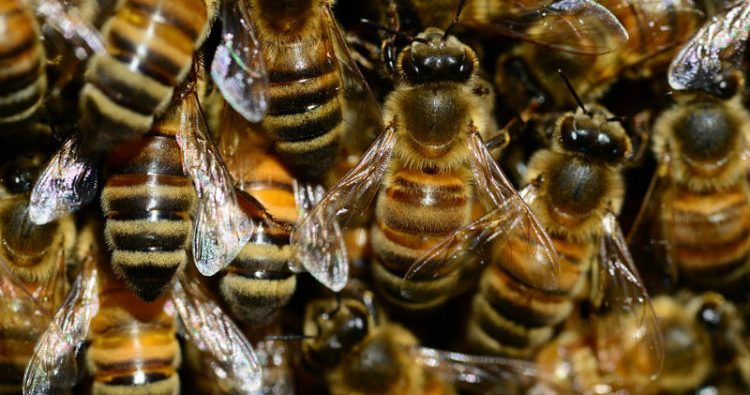
Hornets are a perennial problem for bees. Hornets consume honey, and in Europe they are known for swarming bee hives, killing the bees in the hive, then taking it over for themselves. In Japan though, this is not always the case. The eastern honey bee has a very brutal but efficient way of dealing with unwanted guests. The hornets normally send a messenger to find hives with honey. The eastern honey bee lets the hornet enter the hive. When the hornet is comfortably inside, the bees swarm over it covering it completely. The bees then begin to vibrate their abdomens. This causes temperatures at the center to increase to 117˚F which is above the temperature that a hornet can withstand. Eventually, unable to bear the heat, the hornet dies and its message never gets back to its swarm.
Source : unbelievable-facts.com

Facebook Comments